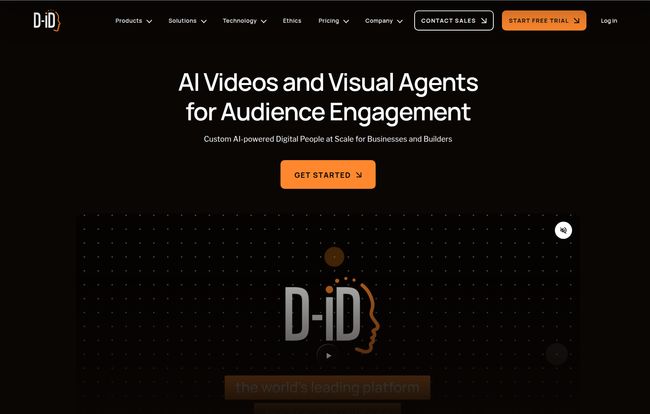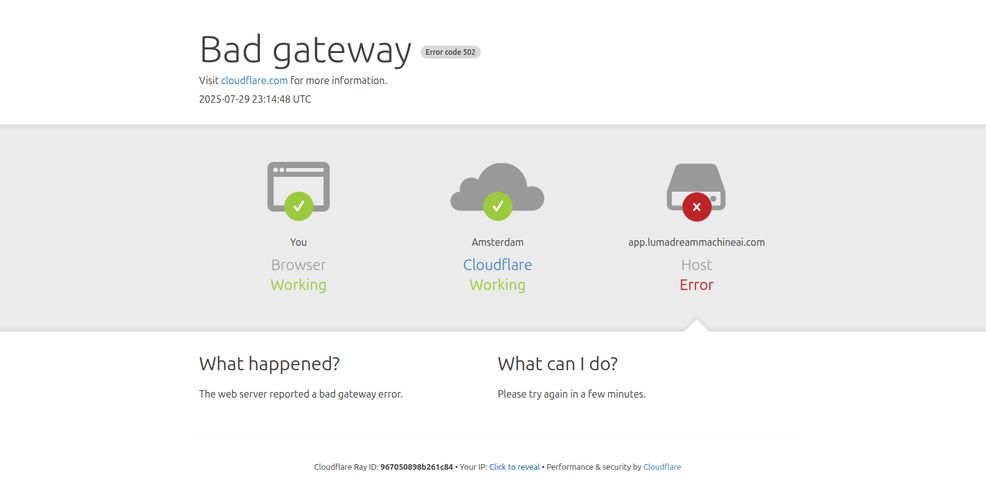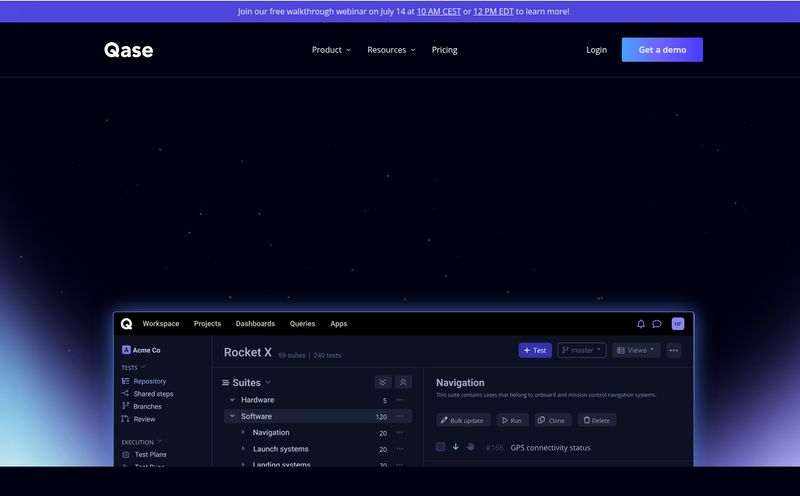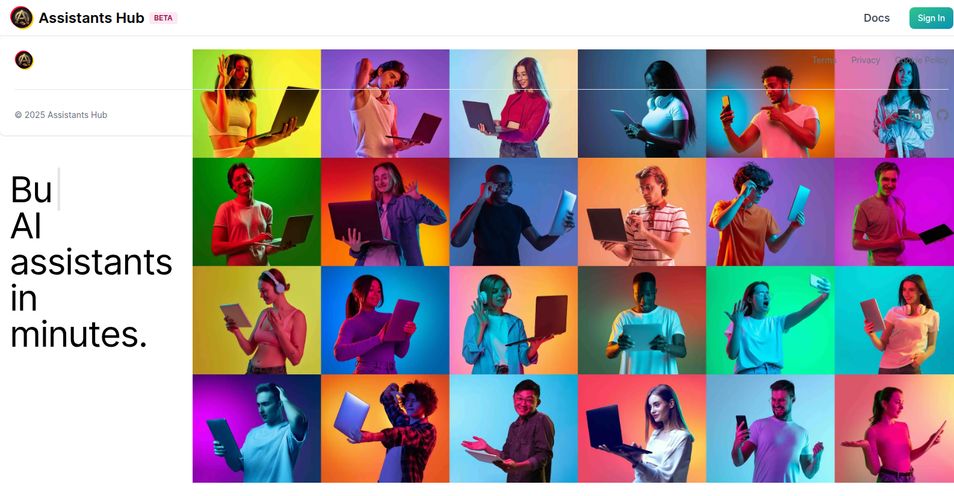I’ve been in the SEO and content game for what feels like a lifetime. And if there’s one constant, it’s the ever-growing demand for video. Everyone wants it. Google loves it. Your audience eats it up. But let's be real—video production is a huge pain. The cameras, the lighting, the scripts, finding someone who doesn't look terrified on screen… it's a whole thing. For years, it's been the bottleneck for so many great content strategies.
So, when I started seeing AI video generators pop up, my interest was piqued. Skeptical, but piqued. One name that kept crossing my desk was D-ID. They claim to turn any image into a talking head, a “digital person,” with just a script. Is it magic? Is it another overhyped AI toy? Or is it a genuinely useful tool for marketers and creators? I had to find out.

Visit D-ID
So, What is D-ID, Actually?
Let's cut through the jargon. At its core, D-ID is a platform that breathes life into still photos. You upload a picture—it could be a stock photo, a custom-generated AI image, or even a picture of yourself—and you give it a script. D-ID’s deep-learning tech then animates the face, syncs the lips to the audio, and spits out a video of that person “speaking” your words. It's like giving a photograph a shot of espresso and a script.
It’s designed for anyone who needs to create video content but lacks the resources (or the desire) to do a full-blown video shoot. Think training videos, marketing clips, social media updates, or even making customer support more personal. The whole idea is to make video creation scalable and, dare I say it, easy.
My First Impressions and Getting Started
Signing up for the 14-day free trial was painless. You get a few minutes of video credits to play with, which is enough to get a proper feel for the platform. The dashboard, or “Creative Reality™ Studio” as they call it, is pretty clean. It’s a dark-mode interface, which my eyes appreciate, and it’s not cluttered with a million buttons. It feels professional.
The process is straightforward: Choose an avatar (they have a library of pre-made ones, or you can upload your own), type or upload your script, choose a voice and style, and hit generate. My first test was, of course, uploading a picture of my cat. The results were... unsettlingly hilarious. But it proved the point. The tech works. The lipsync was a bit weird on a feline, as you'd imagine, but it was impressive nonetheless.
The Standout Features I Actually Liked
After messing around, I dug into the features that a professional like me would actually use for a client or my own brand. A few things really stood out.
From Text to a Talking Head
This is the bread and butter of D-ID. The text-to-speech engine is surprisingly robust. There's a huge selection of languages, accents, and tones (cheerful, sad, excited, etc.). I found a few standard American and British English voices that sounded remarkably natural. Not perfect, mind you—you still get the occasional odd inflection that screams 'AI'—but for short-form content and explainer videos, it's more than good enough. Way better than the robotic voices of yesteryear.
Bringing Your Own Avatars to Life
This is where the magic happens for me. While their stock presenters are fine, the ability to upload your own image is a game-changer for branding. You can create a consistent brand persona or even animate a photo of your company's CEO for internal announcements. I experimented with a high-res photo of myself, and the result was surprisingly good. It’s a little strange watching a static version of yourself talk, but the potential for personalized sales outreach or social content is massive.
Going Global with Video Translation
Okay, this is a big one for any brand with an international audience. You can create a video in English, and then, with a few clicks, have D-ID translate the audio and re-generate the video in Spanish, French, or dozens of other languages. The lip-syncing even adjusts to the new language. For a content team, this ability to localize video content without having to re-shoot everything is, frankly, incredible. It saves a ton of time and money.
The All-Important Question: How Much Does D-ID Cost?
Alright, let's talk money. AI tools can range from cheap novelties to eye-wateringly expensive enterprise software. D-ID falls somewhere in the middle, with a plan for most budgets. Their pricing is based on a "credit" system, where generating a short video (up to 15 seconds) costs a certain number of credits.
Here’s a simplified breakdown of their annual plans (you pay more if you go month-to-month):
| Plan | Price (Annual) | What You Get |
|---|---|---|
| Trial | $0 | 14-day trial, up to 3 mins of video. Great for a test drive. |
| Build | $14.40 / month | Up to 16 mins of video. Includes a personal avatar but has a D-ID watermark. |
| Launch | $35 / month | Up to 45 mins of video, no D-ID watermark, and you get access to 1 voice clone. This feels like the sweet spot for serious creators. |
| Scale | $138.60 / month | Up to 200 mins of video, more voice clones, and faster processing. For agencies or heavy users. |
| Enterprise | Custom | All the bells and whistles, custom minutes, and dedicated support. |
For the most up-to-date details, you should definitely check their official pricing page. The main takeaway is that you have to be on the 'Launch' plan or higher to get rid of their watermark, which is a pretty standard industry practice.
The Not-So-Great Stuff (Let's Be Honest)
No tool is perfect, and D-ID is no exception. While I was generally impressed, there are a few things to be aware of.
First, the uncanny valley is real. While the tech is good, it’s not flawless. Sometimes the head movements are a bit repetitive or the blinks are slightly off. It’s not something you’d use to fake a live-action movie, but for its intended purpose, it's fine. You just have to manage your expectations.
Second, the watermarks on the lower-tier plans are a bit of a bummer. If you're creating content for a professional brand, you'll almost certainly need to spring for the $35/month Launch plan to get a clean video. Also, some of the coolest features, like voice cloning, are locked behind those higher tiers.
Finally, you are at the mercy of the AI. If it misinterprets a word's inflection or creates a weird facial twitch, there's not much you can do to manually tweak it besides trying a different voice or adding punctuation to your script. You lose that fine-grained control you'd have with a human actor.
Final Verdict: Is D-ID Worth Your Time and Money?
After spending a good chunk of time with it, my answer is a solid yes, for the right person. D-ID isn't going to replace charismatic human presenters, nor should it. But that’s not its goal.
If you're a small business, a marketer, or an educator who needs to produce clean, informative video content quickly and at scale, D-ID is a fantastic tool. It solves the massive headache of traditional video production. The ability to create dozens of personalized sales videos or localize a marketing campaign into ten languages in an afternoon is something that was unthinkable just a few years ago. For agencies, its a no-brainer.
Is it perfect? No. But it’s a powerful and rapidly improving tool that democratizes video creation. It’s definitely worth signing up for the free trial to see how it could fit into your workflow. I, for one, will be keeping it in my toolbox.
Frequently Asked Questions about D-ID
What exactly is D-ID?
D-ID is an AI-powered platform that lets you create videos of talking avatars. You provide a still image (a photo, a drawing, etc.) and a text script, and the platform animates the face to speak the text with synchronized lip movements.
Can I use my own photo as an avatar in D-ID?
Yes, absolutely. This is one of its best features. You can upload a photo of yourself, a team member, or a custom-designed character to create branded video content.
Is there a free version of D-ID?
D-ID offers a 14-day free trial that gives you a set number of video credits to test out the platform's core features. There isn't a permanent free plan for ongoing use; you'll need to subscribe to a paid plan after the trial.
What are D-ID credits?
Credits are the currency you use within D-ID to generate videos. For example, creating a standard 15-second video might cost 1 credit. Longer videos cost more credits. Each pricing plan comes with a certain number of credits per month.
Do all D-ID videos have a watermark?
No, but the free trial and the entry-level 'Build' plan do include a D-ID watermark on the videos. To get watermark-free videos, you need to subscribe to the 'Launch' plan or higher.
What's the video quality like?
The output is in standard HD (720p) on most plans, with Full HD (1080p) available on some. The quality is perfectly suitable for social media, websites, and internal communications. The animation quality is generally very good, though it can sometimes have minor AI-related imperfections.
Conclusion
The world of AI is moving at a breakneck pace, and tools like D-ID are shifting from futuristic concepts to practical, everyday solutions. It elegantly solves a real-world problem for content creators: the high cost and complexity of video production. While it has its quirks, the ability to generate a talking-head video from a single image and a script is undeniably powerful. If you’ve been putting off making videos, this might just be the kickstart you need.



